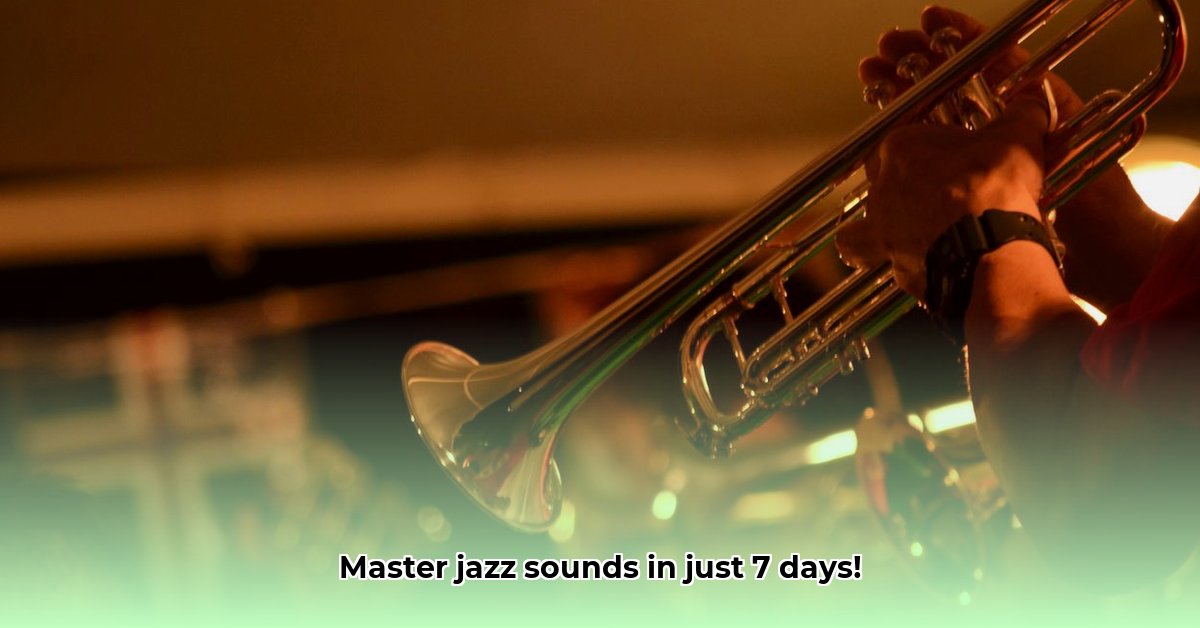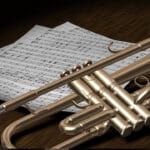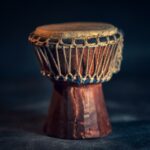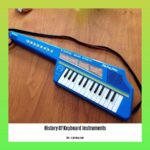Ever wondered what makes jazz music so unique and exciting? A big part of it is the amazing instruments! This guide is your backstage pass to understanding the sounds of jazz, whether you’re a complete beginner or already playing an instrument. We’ll explore the main players—the piano, bass, drums, saxophones, trumpets, and more—showing you how they work together to create that unforgettable jazz feeling, understanding the rhythm section and horn section. We’ll even peek at some less common instruments that add their own special spice to the mix. Plus, we’ll give you some practical advice on picking the instrument that’s right for you, so you can start making your own jazz magic.
Understanding Jazz Instrumentation: Essential Instruments and Their Roles
Want to dive into the exciting world of jazz music and explore the jazz ensemble? Understanding the instruments is your first step! This guide gives you a quick start, showing you the main players and how they all work together to create that unforgettable jazz sound. We’ll cover essential instruments in both the rhythm and horn sections, touching on their unique roles and famous players.
The Rhythm Section: Laying Down the Groove and Heartbeat of Jazz
The rhythm section is like the engine of a jazz band – it provides the beat, the harmony, and the overall feel of the music, delivering the music’s pulse. It’s the foundation upon which the rest of the band builds its sound. Let’s check out the key players:
- Piano: The piano, a cornerstone of jazz, is incredibly versatile. It handles rhythm, plays chords that support the melody, and can even take amazing solos. Think of the elegant harmonies of Bill Evans or the complex improvisations of Thelonious Monk – both masters of the jazz piano! The piano provides not just harmonic support but also rhythmic drive, utilizing techniques like comping to fill in the spaces and respond to other musicians.
- Bass: The bass guitar (or the upright bass, a taller, acoustic version) anchors everything. It plays the low notes, providing a steady rhythmic pulse and the harmonic foundation. The upright bass, with its rich, resonant tone, is particularly associated with classic jazz sounds. Think of the walking bass lines of Paul Chambers, a classic style, or the more modern funky grooves of Victor Wooten – both show the bass guitar’s versatility!
- Drums: The drummer is the heartbeat of the band. Their drumming sets the tempo, dictates the feel of the music (swing, bossa nova, etc.), and creates rhythmic complexity. Jazz drumming is about more than just keeping time; it’s about creating textures and colors. Consider the innovative drumming of Max Roach or the fusion sounds of Tony Williams – both legends in the jazz drumming world! Drummers use a variety of techniques, including brushes, sticks, and mallets, to achieve different sounds.
- Guitar: While not always a centerpiece, the guitar adds a special flavor, sometimes playing riffs, sometimes weaving melodies, and often supporting the rhythm section. From providing subtle chord voicings to taking blazing solos, the guitar is a flexible instrument in jazz. You can hear the difference between the cool sounds of Wes Montgomery and the more experimental styles of Pat Martino. The electric guitar has really changed jazz’s sound, too, especially in the fusion era.
The Horn Section: Melodies, Harmonies, and Improvisation
The horn section is where many of the melodies and improvisations come to life, adding color and excitement to the music. These instruments often take center stage, engaging in musical conversations and showcasing individual virtuosity.
- Saxophone: The saxophone family is huge – alto, tenor, soprano, baritone – each with its own unique voice. These instruments bring a wide range of sounds and emotional expression to the music. From smooth and sultry to powerful and soaring, the saxophone is a chameleon. Just listen to the soulful tones of John Coltrane or the mellow vibes of Cannonball Adderley to see how versatile the saxophone can be! The saxophone is a key solo instrument, capable of both intricate melodies and passionate improvisations.
- Trumpet: The trumpet’s bright, clear sound cuts through the band, making powerful statements. From the iconic sounds of Louis Armstrong to the innovative sounds of Miles Davis, the trumpet has been a central instrument in jazz history and delivering melodies together. The trumpet can be both assertive and lyrical, capable of conveying a wide range of emotions.
- Trombone: With its warmer, mellower tone, the trombone is often used for both melodies and underlying harmonies. The trombone’s slide allows for unique expressive possibilities, from smooth glissandos to precise articulation. Hear the difference between J.J. Johnson’s solid style and Curtis Fuller’s unique sound. Both are great examples of trombone players exploring the jazz soundscape.
- Other Horns: While less common in every band, instruments like the clarinet, flugelhorn, and tuba can add exciting colors and textures. The clarinet, with its bright and agile sound, was particularly prominent in early jazz. The flugelhorn, with its mellow tone, offers a softer alternative to the trumpet. The tuba, providing a deep and resonant bass line, can anchor the horn section. This shows how flexible and experimental jazz music really is!
Beyond the Basics: Uncommon Instruments in Jazz
Jazz isn’t limited to the standard instruments. Many other instruments have added to the richness of jazz. The shimmering sounds of the vibraphone, the accordion’s versatility, and the sometimes haunting sound of the cello are all examples of how jazz embraces a wide variety of instruments, enriching jazz sound palette. Other examples include the harmonica (featured in the playing of Toots Thielemans), the violin (prominent in gypsy jazz), and even occasionally instruments like the banjo or oboe.
Master Improvisation: How is Each Instrument Improvised in Jazz?
Jazz is all about improvisation – musicians making up music on the spot and exploring spontaneity. Each instrument has its own strengths when it comes to improvisation. The long, flowing notes of a saxophone lend themselves to extended solos, while the trumpet’s punchier tone is better for shorter ideas. The bass provides a stable foundation for all the improvisation to build upon, while the piano can offer harmonic and melodic counterpoint. Drummers often engage in call-and-response patterns with the other musicians, adding rhythmic excitement to the improvisation. Improvisation in jazz requires a deep understanding of harmony, melody, and rhythm, as well as the ability to listen and respond to the other musicians.
Choosing Your Instrument: Finding Your Voice
Picking an instrument is a very personal decision. An array of options awaits those looking to learn instruments. Think about what sounds appeal to you, how challenging you want the instrument to be, and what role you’d like in a band. Experiment! Try different instruments to discover what best suits your musical personality. Consider factors like the physical demands of the instrument, the cost of lessons and equipment, and the availability of teachers and resources in your area.
Instrument Comparison: A Quick Look
| Instrument | Type | Sound | Improv Style | Famous Players | Key Qualities |
|---|---|---|---|---|---|
| Piano | Rhythm/Harmony | Varied, versatile | Melodic, Rhythmic | Oscar Peterson, Ahmad Jamal | Harmonic foundation, solo potential |
| Double Bass | Rhythm | Deep, resonant | Walking bass, Funky | Paul Chambers, Ron Carter | Rhythmic anchor, harmonic support |
| Drums | Rhythm | Percussive, Dynamic | Rhythmic, Complex | Max Roach, Tony Williams | Timekeeping, rhythmic texture, interaction |
| Guitar | Rhythm/Harmony | Varied, often bright | Melodic, Rhythmic | Wes Montgomery, Pat Martino | Versatility, chordal and solo capabilities |
| Saxophone | Melody | Rich, expressive | Melodic, flowing | John Coltrane, Cannonball Adderley | Expressive melodies, solo potential |
| Trumpet | Melody | Bright, clear | Sharp, powerful | Louis Armstrong, Miles Davis | Powerful lead lines, distinctive timbre |
| Trombone | Melody | Smooth, rich | Melodic, Harmonizing | J.J. Johnson, Curtis Fuller | Expressive slide, harmonic blending |
This guide is just a starting point; the world of jazz instrumentation is vast and varied. Keep exploring and listening, and you’ll discover even more instruments and sounds! Consider attending live jazz performances, listening to a wide range of jazz recordings, and talking to experienced jazz musicians to deepen your understanding and appreciation of this rich and diverse musical tradition.
- The Accidental Breakthrough: Penicillin’s Discovery and Impact - August 1, 2025
- Medieval Universities: Shaping Modern Academia - August 1, 2025
- The Radium Girls: Workplace Safety Lessons from a Tragic Past - August 1, 2025
















